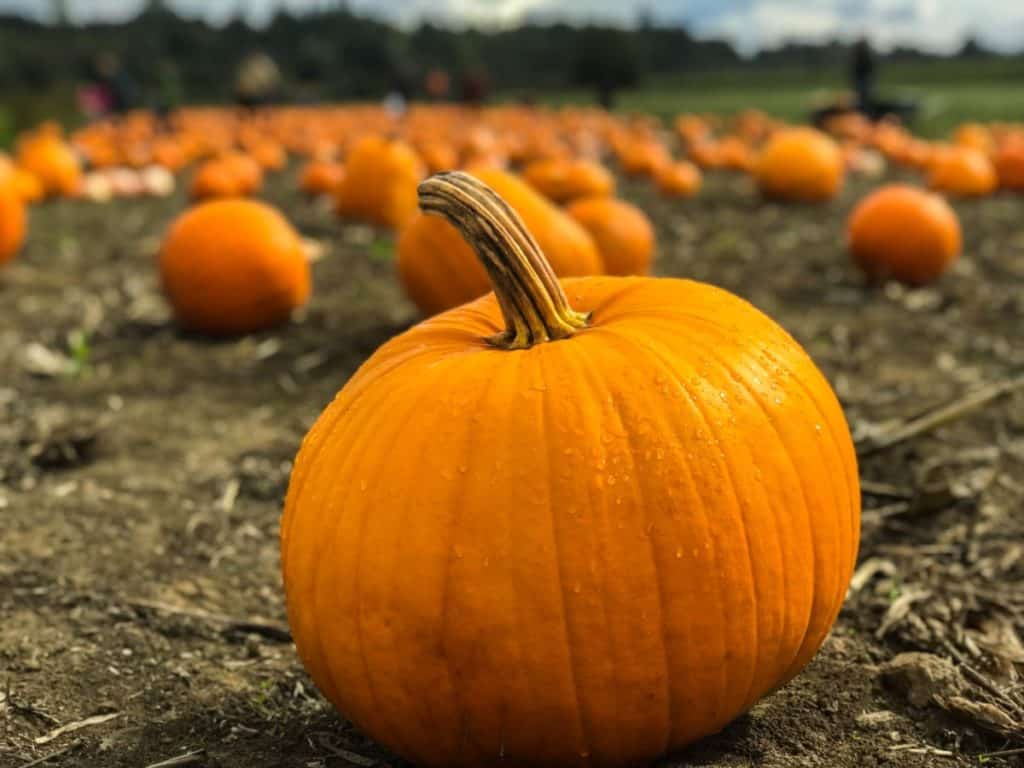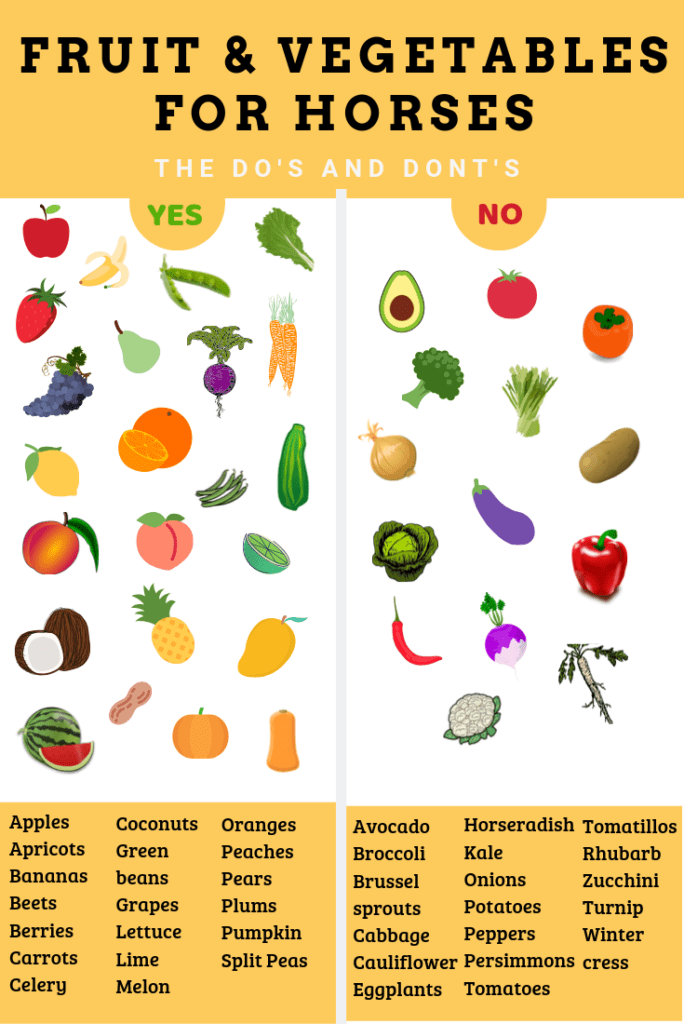
Every holiday season I feel a little guilty. Here I am sipping on my spiced pumpkin latté, munching all the advent chocolate and feasting on delicious leftovers from Christmas meals while my horse is completely left out. How can I let her in on the yumminess? Can I share any of my Halloween treats with her?
Can horses eat pumpkin? Healthy horses can eat pumpkin in moderation and all parts of the fruit can be served with the exception of the stem, which should be removed due to choking hazards. Pumpkins contain nutrients and vitamins that are beneficial for horses and 1-2 cups (2,4 – 4,8 dl) is the veterinarian recommended daily allowance for any fruit or vegetable snack.
Feeding Pumpkin to Your Horse
Maybe it’s Halloween season and you are having fun decorating the stables with carved pumpkins or perhaps you just really love pumpkins and would like to share with your horse. Either way, the good news is you can. According to the US Department of Agriculture, pumpkins consist of 91% water and are rich in nutrients such as potassium, zinc, and magnesium as well as vitamins A, C and E.
Although healthy, show moderation when feeding your horse pumpkin, just as you should when introducing any new types of feed. Equine nutritionist Clair Thunes recommends 1-2 cups (2,4 – 4,8 dl) as an appropriate amount per day. If your horse has a medical condition, always consult with a veterinarian before adjusting a horse’s diet.
These are a few crucial precautions for feeding pumpkin to horses.
- If feeding decorative pumpkins, make sure to remove all candle wax that may have seeped into the fruit.
- Check for and remove any areas with mold or rot as this can be very dangerous for horses to ingest.
- Remove the stem, which represents a choking hazard
- Be aware that not all Cucurbitaceae fruits (the family pumpkins are a part of) are created equal and some are even toxic to our equine friends. The gourd which is also frequently used in Halloween decorations is one of these toxic varieties.
What Fruits and Vegetables are Safe for Horses?
Most fruit and vegetables are fine for horses to consume however, there are some important exceptions that can cause a horse great discomfort or illness. We have developed the below infographic to provide a quick overview of what kind of fruit and vegetables you can and shouldn’t give a horse. Keep in mind that all fruit and vegetables should be given in moderation and broken into pieces to avoid any choking hazard and that they are meant as a treat and not a replacement for their normal diet.

Fruit and Vegetables Horses should Avoid and Why
Looking at the ‘No’ section of the infographic, there are a few groupings or families of fruit and vegetables we should steer clear of when snack planning for our horses.
- Vegetables in the Cruciferous family, the ones that often cause gastric gas, both in humans and horses, should be avoided. Examples are broccoli, cauliflower, cabbage, kale, brussels sprouts and so on. Eating these kinds of vegetables can lead to gas and cause the horse quite a bit of discomfort.
- Vegetables in the Nightshade family, such as tomatoes, tomatillos, potatoes, bell peppers, eggplant, hot peppers, and goji berries contain alkaloids which can cause neurological damage to a horse, and in the worst case death (source).
- Onions, garlic, shallot, leek, and chives are all part of the Allium Genus family that are toxic to horses (source).
Fruit and vegetables should be considered a snack – it is best to stick to your usual feeding routine and for your horse’s diet to consist mainly of grass or hay.
How to Feed Fruit and Vegetables to Horses
Before you feed fruit and veggie snacks to your horse, it’s recommended that you first:
- Wash it to remove any chemicals and pesticides that may have been sprayed on them during production
- Cut them into bite-sized pieces to avoid any dangers of choking. Small pieces are especially important for horses with dental problems.
- Mix the pieces into the horse’s regular feed or give as a treat outside of meals. Whenever offering a horse a snack, make sure you offer it on a flat hand, to avoid the horse mistaking your finger for part of the treat.
- Limit the amount to 1-2 cups (2,4 – 4,8 dl) per day
- Ask permission before giving a treat if it is not your horse. If the horse is on a specific diet or has a medical condition, you could inadvertently cause damage to its health.
Create Your Own Pumpkin Treats for Your Horse
If you are one of those people who love to spend time in the kitchen, perhaps you would like to create your own homemade pumpkin treats for your equine bestie? The below recipe does not have any added sugar, which means it will be suitable for pretty much any horse.
Happy baking!
Related Questions
What fruits are safe for horses? Our infographic below gives a good overview of which fruit and vegetables you can feed your horse. Popular choices are apples, bananas, pears, apricots, and watermelon.
What vegetables can you feed a horse? Our infographic below gives a good overview of which fruit and vegetables you can feed your horse. Popular choices are carrots, beetroot, cucumber, parsnip, and celery.
Can horses eat canned pumpkin? Healthy horses can eat canned pumpkin in moderation. Pumpkins contain nutrients and vitamins that are beneficial for horses and 1-2 cups (2,4 – 4,8 dl) is the veterinarian recommended daily allowance.
Can horses eat butternut pumpkin? Healthy horses can eat butternut pumpkin in moderation and all parts of the fruit can be served with the exception on the stem, which should be removed due to shocking hazards. Pumpkins contain nutrients and vitamins that are beneficial for horses and 1-2 cups (2,4 – 4,8 dl) is the veterinarian recommended daily allowance.
Can horses eat broccoli and cauliflower? Horses should not be given broccoli or cauliflower. Vegetables in the Cruciferous family often cause gastric gas which can cause the horse quite a bit of discomfort.
Can horses eat cucumber? Healthy horses can eat cucumbers in moderation. Cucumbers contain great nutrients and vitamins that are beneficial for horses and 1-2 cups (2,4 – 4,8 dl) is the veterinarian recommended daily allowance for fruit and vegetable snacks.
This article is accurate and true to the best of the author’s knowledge. It is not meant to substitute diagnosis, prognosis, treatment or any type of medical advice for humans or horses. Animals exhibiting signs and symptoms of distress should be seen by a veterinarian immediately.


